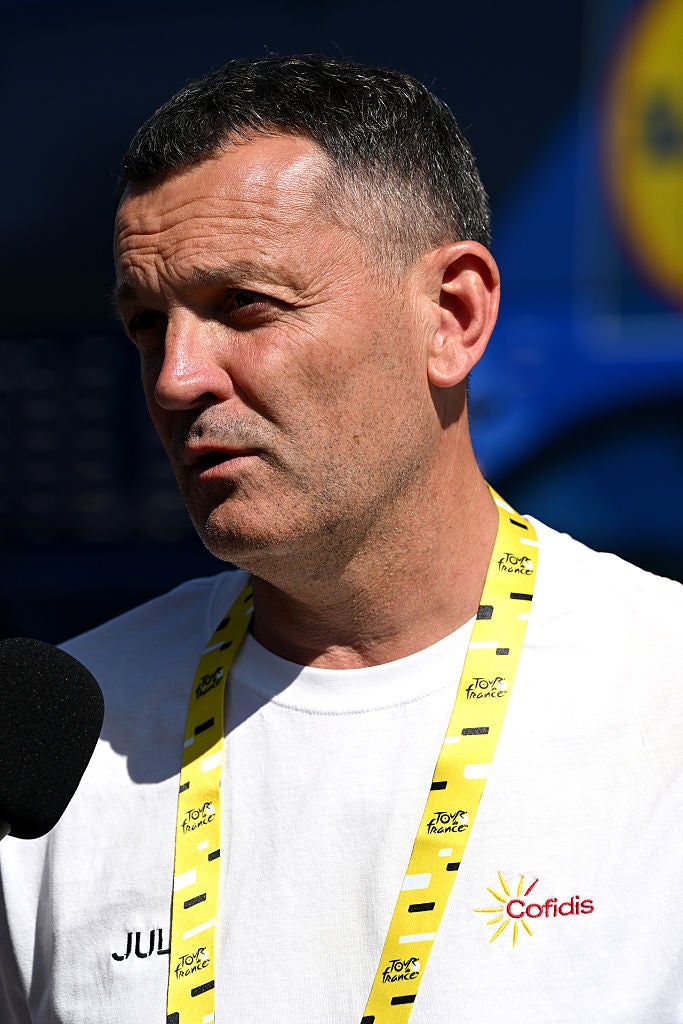LE MONT-DORE, France (Velo) — The last time a French rider won the Tour de France, no one racing in the 2025 edition had even been born.
The oldest rider in this year’s grand boucle — 39-year-old Geraint Thomas — was born one year after Bernard Hinault won the 1985 yellow jersey.
French malaise in its national Tour has festered into a national obsession and burden for generations of French teams and riders ever since the Badger’s last bite.
Cofidis team boss Cédric Vasseur says there’s a very easy explanation behind the French yellow jersey drought: money.
“Without a €50–60 million budget, you can forget about winning the Tour,” Vasseur told Velo. “Right now, some teams have €50 million budgets or more. No French team has that. The highest we have is around €24–25 million. That’s half. We have no chance.”
Vasseur admits there’s almost no possibility that a French rider will beat back the likes of Jonas Vingegaard or Tadej Pogačar this year.
Vausseur says without the endless financial spigots of the super teams, the French squads — which largely sign the top French riders — have no hope of winning another yellow jersey.
As an unofficial financial arms race is taking over the peloton, with the Tour’s top super teams buying the top riders and signing them to “forever contracts,” Vasseur says the smaller French teams are getting squeezed out of the top of the Tour hierarchy.
“What we don’t have is the ability to sign a €10 million rider. And that’s what a Tour de France winner costs these days,” Vassuer told Velo. “You just can’t expect to win the Tour with a guy making less than €10 million.
“And you also need a team around him, and top domestiques cost a lot too. The teams winning the Tour are the ones with the biggest budgets. Without €50–60 million, don’t dream of winning.”
A peloton at two financial speeds
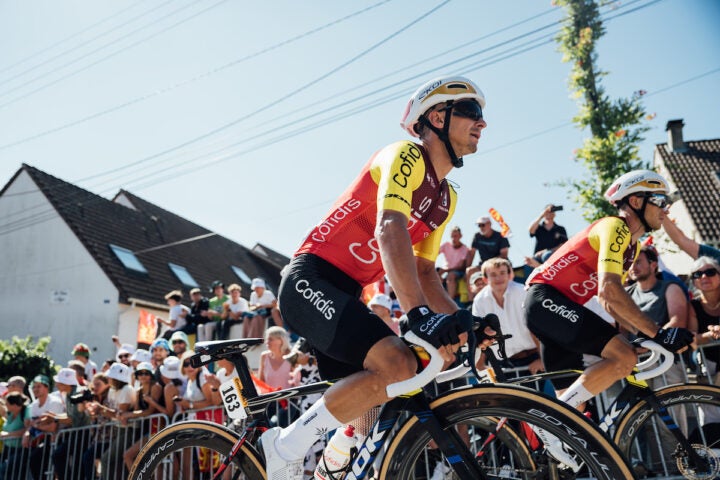
Back in the EPO Era, the French liked to say that there was a “peloton of two speeds” between the clean riders and the cheaters.
Today, that could also ring true among the richest teams and the peloton’s poorer cousins.
Vasseur cites the financial disparity of the top WorldTour as one of the main culprits for the French decline.
♂️ — L’équipe Cofidis a été CAMBRIOLÉE sur le Tour de France : 11 vélos d’une valeur de 13 000 € chacun ont été volés cette nuit, soit un préjudice total de 143 000 €.
La porte de leur camion atelier, pourtant sous surveillance, a été forcée sur le… pic.twitter.com/gkuupZbd2s
— Bastion (@BastionMediaFR) July 6, 2025
Yet he angrily shot back at suggestions that French teams are not doing the cutting-edge work with science, nutrition, and aerodynamics that the other top super teams are using to push the envelope.
Also read: How $50 million super teams are transforming the Tour de France
“That’s bullshit. Total bullshit. People said similar things before, claiming the French couldn’t train properly. It’s nonsense,” Vasseur said.
“All 18 WorldTour teams today work in almost the same way. Some just have more talented riders, because they have more money,” he told Velo.
“It’s not just about money, but money lets you buy the best riders,” Vasseur said. “If you have the best riders, the methodology matters less.
“Everyone’s doing altitude camps. Everyone’s doing aero testing. Everyone’s focused on performance and nutrition. French teams are not behind in preparation.”
Outspent and lowering the bar
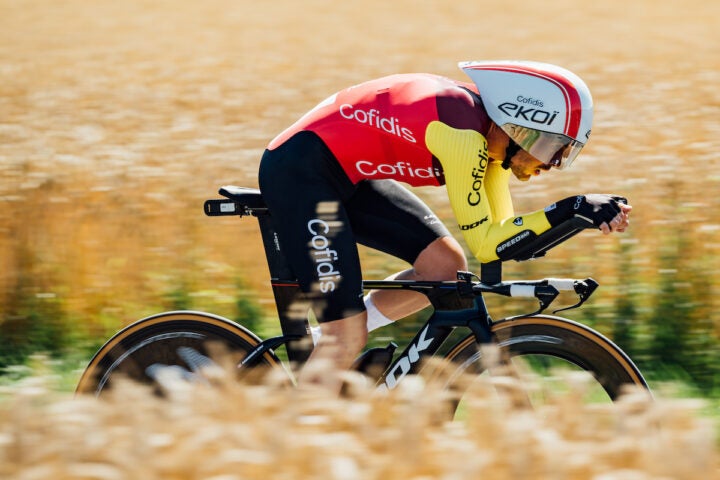
Outspent and overstretched for this Tour de France, Vasseur brings a mixed squad of stage-hunters, baraudours, and opportunists.
A spell in the King of the Mountains jersey in stage 1 and a top-10 from French sprinter Bryan Cocquard are the team’s best so far.
He denied that money was the reason longtime GC star Guillaume Martin jettisoned the team to join Groupama-FDJ.
“We worked with Guillaume since 2020, and after four or five years, it’s normal that a rider wants something new,” Vasseur shrugged. “Careers are short, maybe 10 years max. Riders want to explore different teams, different environments. It’s just part of the business.”
Also read: Decathlon vows to spend to make cycling’s new super team
Vasseur insists he doesn’t look on in envy at his well-funded super team colleagues who have all the money they need to sign the winners of today and the stars of tomorrow.
“Honestly, we’re happy with what we have. Cofidis has been in cycling since ’97. We’re not trying to become UAE or Visma,” Vasseur said of searching out for well-funded backers. “That chase can be endless and irrational. We want to honor our sponsors, give people a good show, and race with emotion.”
Even with a budget of around $20 million, Cofidis takes on an underdog role during the Tour by chasing breakaways, intermediate sprints, or the Holy Grail, a stage victory at the Tour de France.
“With even the whole budget of a French team you could not even sign the rosters of the top GC teams here at this Tour,” he said. “We’re not even targeting that. We focus on winning stages, taking part in the race, and giving our sponsors satisfaction.
“We know that we won’t win the Tour, but we can still aim to be in the top 10–15, like last year with Guillaume Martin. He was the top French rider,” Vasseur said. “That’s a real satisfaction for our sponsors.”
Less room at the top
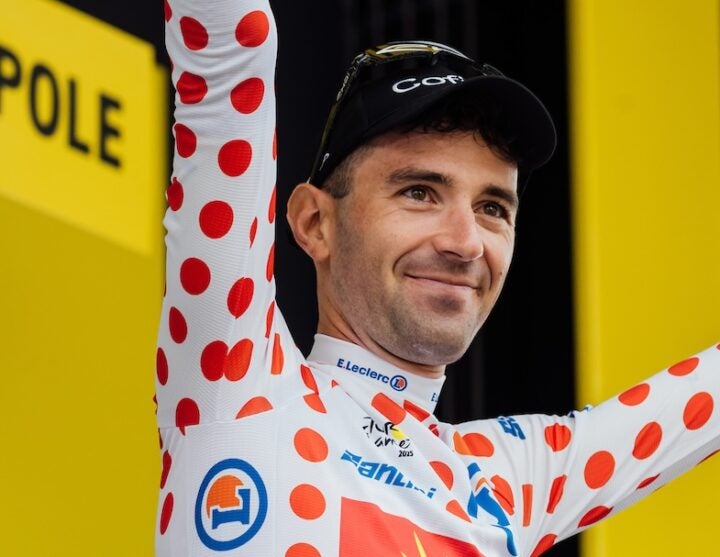
Vasseur cited other reasons behind France’s long yellow jersey drought, suggesting that when France ruled the Tour, with dynasties like Jacques Anquetil and Hinault, cycling was a much smaller sport dominated by a handful of European nations.
Just as Hinault was in the final years of his peak powers, the sport underwent a radical makeover with the arrival of riders from the United States, UK, Canada, and Australia.
Add today’s latest wave from Scandinavia, Eastern Europe, Africa, and Asia, and the sport is more crowded than ever with genetic freaks from all over the globe.
It’s just a numbers game, and it makes it harder for French riders to shine.
“There are fewer French riders at the start of the Tour now, so of course it’s more difficult for a French guy to win a stage, let alone the GC,” Vasseur said. “And if you look at the last few years, we’ve had incredible riders like Pogačar, like Vingegaard. Right now, it’s very hard for us to compete with those guys.”
Also read: Cofidis stolen bikes recovered
Since Hinault’s last win in 1985, of course, there have been plenty of French riders who’ve hit the podium and raised national hopes and carried the burden.
The likes of Richard Virenque, Thibaut Pinot, and Romain Bardet all reached the Tour podium, but could never punch through to the top.
French riders typically hover toward French teams, which typically pay more for the top national riders. A few riders, like Julian Alaphilippe on Quick-Step and Tudor, might travel beyond the French establishment, but everyone is waiting for their next yellow jersey.
‘Maybe it will take another 50 years’
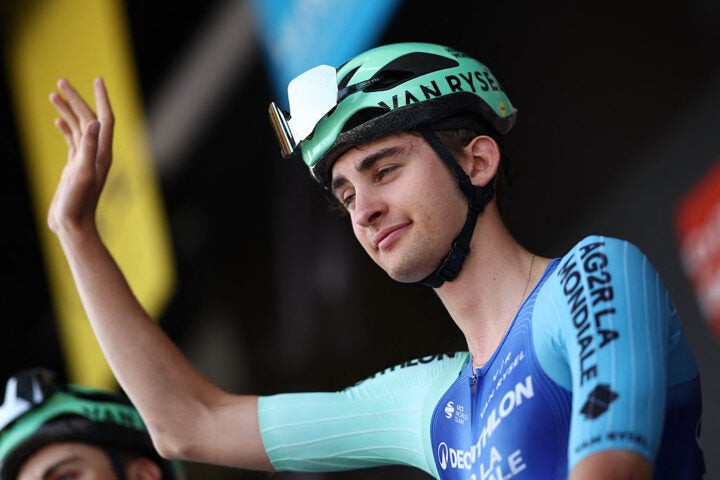
A new generation of young French talent is inevitably coming up.
Could there be a French yellow jersey diamond hiding in the bunch?
“We do have some good young talents coming through, like Romain Grégoire, or Lenny Martinez, but you can’t just arrive and win the Tour. First, you have to win the Dauphiné. You have to win Paris-Nice. You have to beat those guys,” Vasseur said.
“That step hasn’t been taken yet. Before dreaming about winning the Tour and succeeding Bernard Hinault, the French riders need to win a one-week stage race first.”
Some peg Paul Seixas (Decathlon-Ag2r La Mondiale) as the real deal, but the 18-year-old won’t race a grand tour in his rookie season.
Also read: Pedersen latest rider to sign forever contract
Kevin Vauquelin (Arkea B&B) is the top-ranked Frenchman right now, starting Monday’s 10th stage third overall, and he’s been linked to a move to Ineos Grenadiers for 2026.
Yet racing on France’s Bastille Day on Monday, Vauquelin is already feeling the pressure from French fans and media. Many expect the puncheur to struggle once the race hits the higher climbs in the Pyrénées and Alps.
“We’re getting closer. Vauquelin was close at the Tour de Suisse, but we still need to be patient,” Vasseur told Velo in a tone of resignation.
“Maybe it will take 50 years, but one day a Frenchman will return to the top.”
